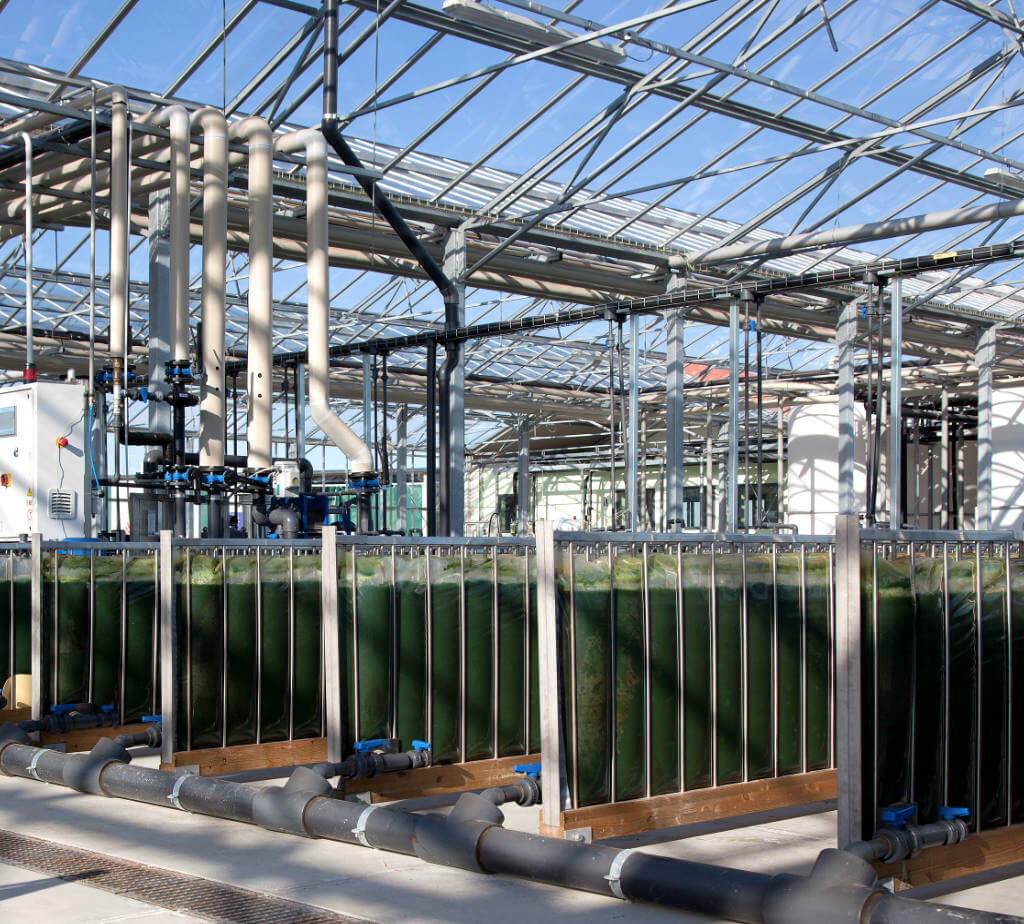Spirulina seaweed grows naturally in only a few areas of the world, in areas with high alkalinity and a constant temperature around 30-38 degrees Celsius. Compared to other crops, it is more sustainable in that it practices a kind of water and land conservation: it consumes little, but yields a lot, given its high protein and other essential nutrient content.
Those who, like Algavenice, are professionals in microalgae production know that in order to produce the highest quality spirulina algae, it is necessary to set up an efficient and constantly monitored closed-system cultivation, i.e., through state-of-the-art photobioreactors that allow the perfect natural habitat for its development to be recreated.
Innovative and certified technologies
It is important to preserve crops from any stress during growth in order to have a higher quality end product. Only by using closed photobioreactors, employing certified, innovative and constantly updated and monitored technologies, and also by putting in place good cultivation and processing practices, will it be possible to have extremely pure spirulina. A product that is healthy and safe, a concentrate of organoleptic properties, a super fuel for our “human machine.”
Spirulina on the market
The most common formats of spirulina are those we offer in our
The powder is more practical to use in cooking, to mix with flour, for example, to make bread, cakes, cookies, fresh or stuffed dough, which will then have that typical green color of seaweed. Tablets are more convenient for those who prefer the supplement route (don’t forget that long treatment periods are not needed) ready to take anywhere, with a little water, whether at work or when you are out and about. Finally, flaked spirulina is consumed as is, in chunks, but it is also valued for making skin compresses, excellent anti-aging, moisturizing and firming treatments.
